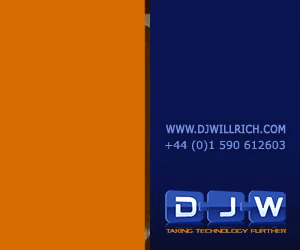Copyright – part of the intellectual property (“IP”) family, which includes designs, trade marks and patents – gives the holder the right to control the copying of their work for a limited time. Governed in the UK by the Copyright, Designs and Patents Act 1988, copyright arises automatically as soon as the following works are created: original literary, dramatic, musical and artistic works; films, sound recordings, broadcasts, typographical arrangements and, in some cases, databases.
In addition to reproduction rights (such as straightforward copying, distribution, and adaptation), a creator also has so-called moral rights, which protect the integrity of the work plus the creator’s reputation. These rights generally last for the creator’s lifetime plus 70 years after their death – quite a long duration, which gives copyright practitioners some challenges.
Generally speaking, individuals automatically own copyright. However, employers usually own copyright in employees’ work, so a museum itself can be copyright holder of a vast amount of material.
Managing both the museum’s rights and those owned by a third party can be a challenge. Looking first at the museum’s rights, these can encompass image rights in museum-taken photography; curators’ texts; website content; reports; scholarly articles; social media feeds; educational resources; conservation reports; visitor guides / maps; plus copyright in any collection works if it has been assigned to the museum.
_image_1.jpg)
Copyright is often shared generously by public museums, in the interest of their public mission. For example, certain Tate material can be used freely according to these website guidelines.
Other museums may make material available via Creative Commons licences, for example. In some circumstances, museums might charge fees for further use of their material: Tate Images charges licence fees for use of collection imagery. All income supports the museum. For those museums without in-house image libraries, commercial licensing partners are another option – the museum receives royalties for reproduction of its artworks.
Turning to collection artworks, it is vital to remember that museums do not have an automatic right of reproduction in works they own. An object and its intellectual property can have two separate owners. Dealing with artists, their estates, agencies and other arts organisations can be one of the most rewarding parts of copyright management. The sector is dependent on excellent relationships with these parties to be able to undertake all the activities the public now expects when engaging with a museum: a decent website, thoughtful educational materials, social media interaction, postcards, merchandise and so on.
Tate has copyright agreements in place for the 20,000 or so copyright works in its Main Collection. Generally speaking, Tate usually asks for the following non-commercial permissions from copyright holders:
1) the right to take photographs, slides and make electronic copies of the artwork for inclusion in Tate’s image libraries and for record and archival use;
2) the right to make archival masters of the artwork by any means or in any media;
3) the right to Reproduce the artwork in electronic form and to store in computer systems and to make such electronic data available by any electronic platforms, including the internet and e-mail for educational and promotional uses only;
4) the right to Reproduce the artwork for any publicity and marketing material including e-bulletins, electronic newsletters, advertising posters, invitations, membership leaflets, exhibition reviews and articles, and handbooks, the Biennial report of the Board of Trustees of the Tate and Tate’s annual Forward Plan;
5) the right to Reproduce the artwork in scholarly publications featuring works from the collection, and in educational material, exhibition catalogues and videos;
6) the right to Reproduce the artwork on Tate’s social media platforms including, but not limited to, Twitter, Facebook and Flickr;
7) the right to permit The National Archives [‘TNA’] and the British Library [‘BL’] to include the artwork on archival copies of Tate’s website, itself to be made available via TNA’s and BL’s websites.
Whatever licence is agreed is then stored on a copyright database for consultation by any member of Tate staff. Commercial rights are negotiated case-by-case by Tate Enterprises. Clear documentation is, of course, absolutely crucial in all this, as with other areas of museum life. The intangible is as important as the tangible!
_-_image_2.jpg)
The Government is set to introduce a series of copyright exceptions in April 2014. Some of these are specifically for museums, libraries and archives, whilst others will also have an impact on museum education and research.
Museums and galleries will be allowed to make copies of works in their permanent collection for the purpose of preservation without having to first seek permission of the rights holder. This will mean museums will be allowed to ‘format shift’ content to preserve it, make copies for study purposes, or carry out large-scale conservation work without having to go through a rights clearance process. It will also allow a museum to make a copy of a work in their collection to replace a work in another museum, library or archive collection that has been lost, damaged or destroyed and where it is not practical to purchase a replacement.
Museums (as well as libraries, archives and educational establishments) will be allowed to digitise works in their permanent collection for the purpose of displaying them on ‘dedicated terminals’ on the premises without having to first seek permission.
Both of these exceptions will also be protected from over-ride by contract meaning that rights holders would not be able to exempt the work from this exception. It will also apply to all classes of copyright work.
Learn more about Collections and Copyright at the Museums + Heritage Show
Back to top




